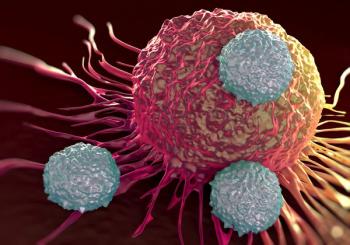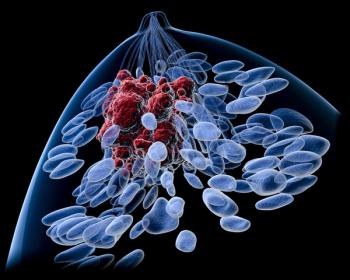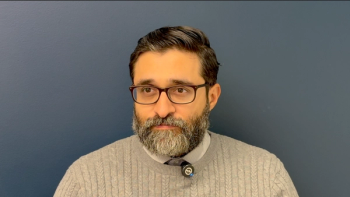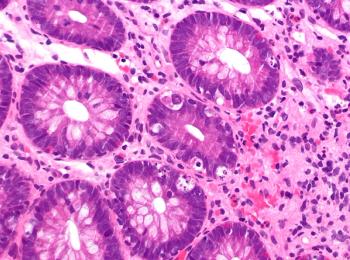
- ONCOLOGY Vol 10 No 3
- Volume 10
- Issue 3
Trends in Smoking Initiation Among Adolescents and Young Adults-United States, 1980-1989
The evaluation of efforts to prevent tobacco use among adolescents requires accurate surveillance of both smoking prevalence and smoking initiation rates. Although several surveillance systems provide timely data about adolescent smoking prevalence, data characterizing rates of smoking initiation among adolescents have been limited. To improve characterization of trends in smoking initiation among young persons, data from the Tobacco Use Supplement of the 1992 and 1993 Current Population Surveys (CPS) were used to estimate smoking initiation rates for persons who were adolescents (age 14 to 17 years) or young adults (age 18 to 21 years) during 1980 to 1989. This report summarizes the results of that analysis.
The evaluation of efforts to prevent tobacco use among adolescentsrequires accurate surveillance of both smoking prevalence andsmoking initiation rates. Although several surveillance systemsprovide timely data about adolescent smoking prevalence, datacharacterizing rates of smoking initiation among adolescents havebeen limited. To improve characterization of trends in smokinginitiation among young persons, data from the Tobacco Use Supplementof the 1992 and 1993 Current Population Surveys (CPS) were usedto estimate smoking initiation rates for persons who were adolescents(age 14 to 17 years) or young adults (age 18 to 21 years) during1980 to 1989. This report summarizes the results of that analysis.
The CPS are monthly surveys of the US civilian, noninstitutionalizedpopulation age equal to or more than 15 years. Approximately 56,000households are surveyed each month; one household respondent providesinformation about all household members age equal to or more than15 years. Questions about tobacco use were added to the September1992, January 1993, and May 1993 monthly surveys. The responserates for the three surveys were 84.7%, 84.9%, and 82.0%, respectively(N = 293,543 household members). To minimize biases that couldresult from discrepancies between self-reports and proxy reportsof smoking behavior, this analysis used data from self-respondentsonly (82% of total sample).
Ever-smokers were defined as respondents who answered "yes"to the question, "Have you smoked at least 100 cigarettesin your entire life?" Ever-smokers were asked, "Howold were you when you started smoking cigarettes fairly regularly?"To restrict the analysis to persons who were adolescents or youngadults for some period during 1980-1989, only respondents aged17-34 years at interview were included. The final sample consistedof 71,321 persons, of whom 27,768 (38.9%) were ever-smokers.
Using the age of respondents at the time of the interview andthe age they reported starting smoking, the age of respondentsand their smoking status were calculated for each year duringthe 1980s. The denominator for the initiation rate for a givenyear was the number of respondents at risk for initiating smokingduring that year (persons already smoking were eliminated fromthe denominator for that year). The numerator was the number ofrespondents who reported initiating smoking during that year.Data were weighted by age, sex, and race/ethnicity to providenational estimates.
Among adolescents, the smoking initiation rate decreased slightlyfrom 1980 (5.4%) through 1984 (4.7%) and then increased through1989 (5.5%); the largest annual increase occurred in 1988 (
Editorial Note From the CDC
The findings in this report indicate an increase in the rate ofinitiation of cigarette smoking among adolescents from 1985 through1989, a period during which the rate among young adults declinedand overall prevalence of smoking among adults decreased steadily.One important consequence of the increased rate of initiationamong adolescents will be the increased future burden of tobacco-relateddisease. In particular, because of the increase in initiationsince 1984, it is estimated that an additional 600,000 adolescentsbegan to smoke during 1985 to 1989. Of those adolescents who continueto smoke regularly, approximately 50% will die from smoking-attributabledisease.
Potential reasons for an increase in smoking initiation ratesamong adolescents include a decreased real price of cigarettes,increased levels of disposable income, increased acceptabilityof smoking, and intensified cigarette marketing. However, becausethe real price of cigarettes increased steadily during 1985 to1989 and the real average weekly income among high school seniorsremained stable during this period, cigarettes were less affordableto young persons. In addition, the acceptability of smoking amonghigh school seniors did not increase: During this period therewere increases in the percentages of high school seniors who believedthat cigarettes are harmful, smoking is a "dirty habit,"and becoming a smoker reflects poor judgment, and who reportedthat they "mind being around people who are smoking"and would prefer to date nonsmokers.
Is Advertising the Cause?
The increase in rates of smoking initiation among adolescentsduring 1985 to 1989 may reflect increased real expenditures forcigarette advertising and promotion. The increase in rates occurredduring a period when real expenditures for total cigarette advertisingand promotion* doubled, and expenditures for cigarettepromotion more than quadrupled (
An association between overall cigarette marketing expendituresand initiation rates for smoking among adolescents is plausiblefor at least four reasons:
- First, brand loyalty is usually established with the firstcigarette smoked; therefore, cigarette companies have an economicincentive to encourage first-time smokers to smoke their brands.
- Second, adolescents are exposed to cigarette advertising andpromotions that employ themes and images that appeal to youngpersons.
- Third, advertising directly influences brand awareness andattitudes toward smoking among adolescents. Specifically, adolescentssmoke the most heavily advertised brands, and changes in brandpreferences among young persons are associated with changes inbrand-specific advertising expenditures. For example, the JoeCamel campaign introduced nationally in 1988 was associated withan increase in the market share of that specific brand among adolescents.
- Finally, consumer research suggests that younger persons (ie,age 14 to 17 years) aspire to be young adults; therefore, advertisingand promotional efforts targeted toward young adults may havegreater appeal to adolescents because of their age aspirations.
Although current estimates of smoking initiation rates among adolescentsare not available, from 1991 through 1993, the national prevalenceof smoking increased among eighth and tenth-grade students. Toreverse the trend of increasing smoking initiation rates amongadolescents and to achieve the national health objective for theyear 2000 of reducing the initiation of cigarette smoking by youth(no more than 15% should become regular smokers by age 20; objective3.5), prevention efforts that focus on young persons should beintensified. Such efforts could include making cigarettes lessaffordable by either increasing their real price or by limitingsales to cartons rather than individual packs, enforcing lawsprohibiting the sale and distribution of cigarettes to young persons,conducting mass media campaigns to discourage tobacco use, andeliminating or severely restricting all forms of tobacco productadvertising and promotion to which young persons are likely tobe exposed.
Reported by: K.M. Cummings, PhD, D Shah, MS, Roswell ParkCancer Institute, Buffalo, New York; D.R. Shopland, National CancerInstitutes of Health, Office on Smoking and Health, National Centerfor Cronic Disease Prevention and Health Promotion, CDC.
Adapted from Morbidity and Mortality Weekly Report,vol 44,no.28,1995
Articles in this issue
almost 30 years ago
Trends in Cancer Screening-United States, 1987 and 1992almost 30 years ago
Book Review: Dr. Susan Love's Breast Book, 2nd Editionalmost 30 years ago
DaunoXome Shows Promise as Breast Cancer Treatmentalmost 30 years ago
New Agent Blocks HIV Integrase, Another Target for Anti-AIDS Therapyalmost 30 years ago
Topotecan Demonstrates Significant Activity in Small-Cell Lung Canceralmost 30 years ago
Xerostomia as a Complication of Cancer Treatmentalmost 30 years ago
Irinotecan Shown to Be Effective Against Colorectal Canceralmost 30 years ago
Talk More, Test Less, Panel Urges Health ProvidersNewsletter
Stay up to date on recent advances in the multidisciplinary approach to cancer.

















































































